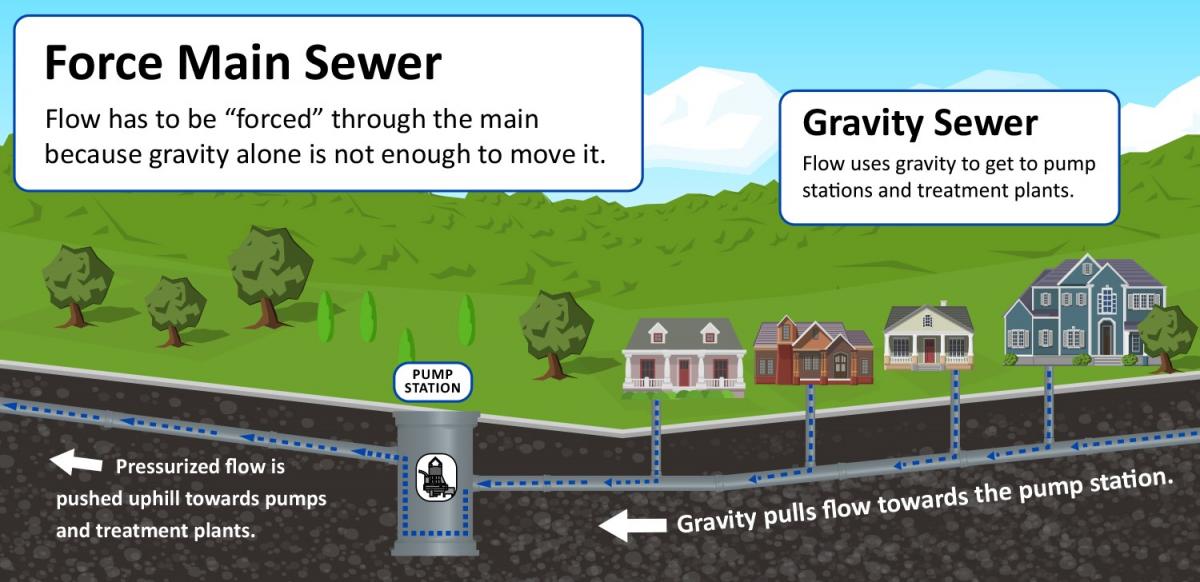Leduc's Sewer System
In your home
The water you drain away in your home when you flush the toilet, empty a sink or bathtub or take a shower leaves your home via a wastewater service pipe.
These pipes, or “service lines,” vary from 10 to 15 cm (four to six inches) in diameter. Service lines for newer homes are generally constructed using plastic pipe. Service lines for older homes were generally constructed using clay tile pipe.
Service lines slope gently downward so wastewater is carried by gravity toward the city sewer system.
In your neighbourhood
Residential service lines connect to feeder, or receiving, mains. Feeder mains vary between 20 and 30 cm (eight to 12 inches) in diameter and are typically constructed from concrete, clay tile or plastic depending on the age of the neighbourhood. If Leduc’s neighbourhood sewer services were installed in 1985 or earlier, they will generally be constructed of clay tile in four-foot sections.
Throughout the city, Leduc’s sewer mains are designed to carry wastewater by gravity at a velocity of 1.2 metres per second.
In a few areas of the city, the sloping mains are too deep to connect into the regional system. The city then uses a lift station to collect wastewater into a well. When the well rises to a specific level, a pump is triggered. The pump contains an “impeller” that spins, creating pressure that draws the sewage up a forced main and into the next available gravity sewer pipe.
The city has three lift stations in the west end and one in Corinthia. An additional lift station is under construction in the west end.

From the city’s force main pipe, Leduc’s sewage flows, again by gravity, into the transmission main. The regional line, which begins at 48 Avenue and 47 Street downtown, is the responsibility of the Alberta Capital Region Wastewater Commission (ACRWC). The wastewater then flows via gravity along the regional line until it reaches the City of Edmonton’s wastewater collection system. The City of Leduc’s sewer is treated by EPCOR at the Goldbar Wastewater Treatment Plant.
Clogs in the city system can be extremely serious – and can simultaneously create backups in many basements in a neighbourhood because several households or businesses, unaware of the clog, keep adding wastewater to an already clogged line.
In our region
The ACRWC transmission system conveys wastewater from communities located south of the City of Edmonton to the City of Edmonton’s sewer transmission system. The City of Leduc’s sewer is treated and returned to the North Saskatchewan River by EPCOR’s Goldbar Wastewater Treatment Plant. The Capital Region Wastewater Treatment Plant services member municipalities located west, north and east of the City of Edmonton.
The ACRWC’s system consists of 138 km of gravity sewers, ranging from 0.5 to 1.5 metres (21 to 59 inches) in diameter, 58 km of pressure pipelines (force mains) of 0.5 to 0.9 metres (20 to 35 inches) in diameter, and five pump stations. This pipeline network is longer than the distance from Edmonton to Red Deer.